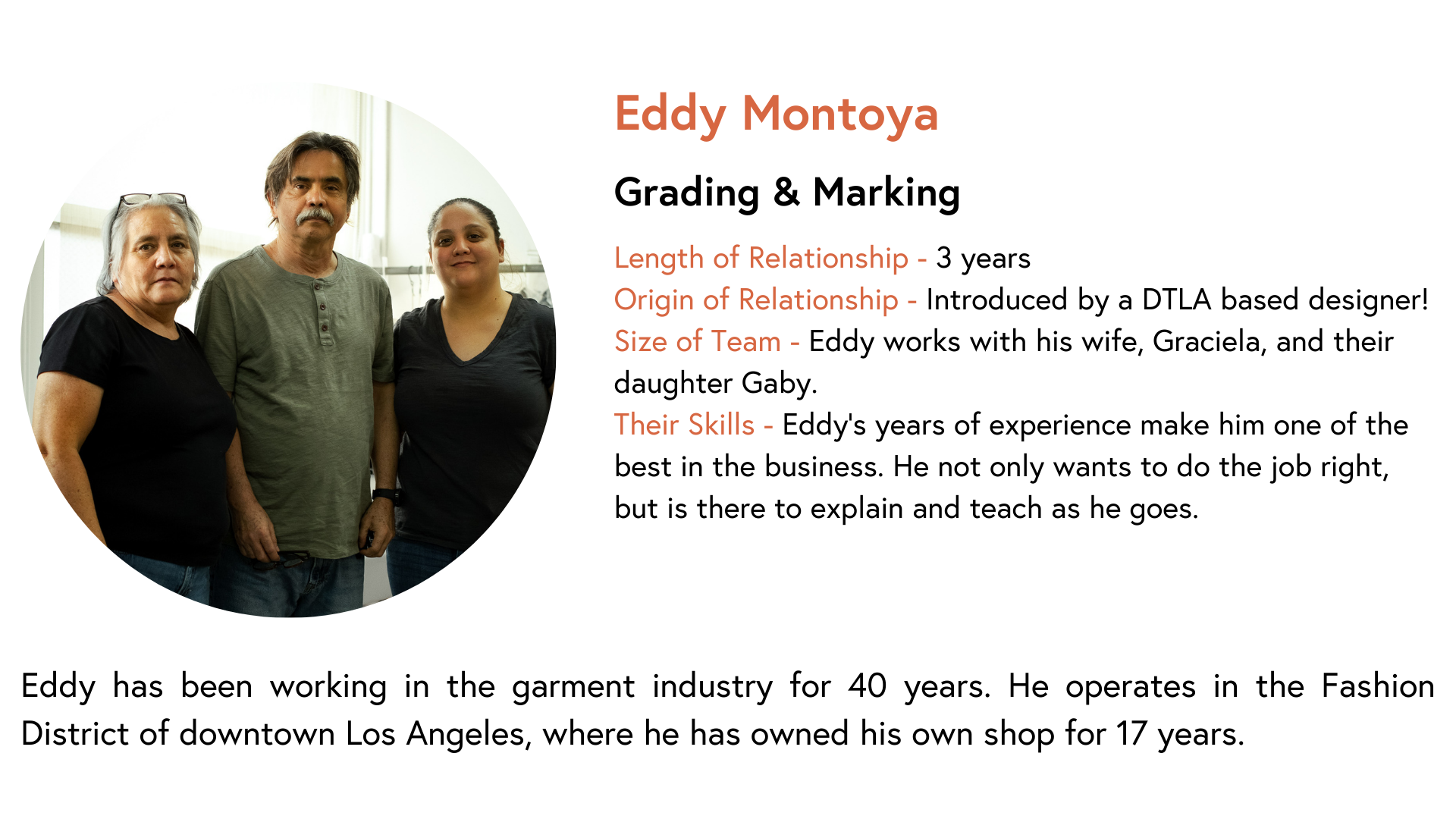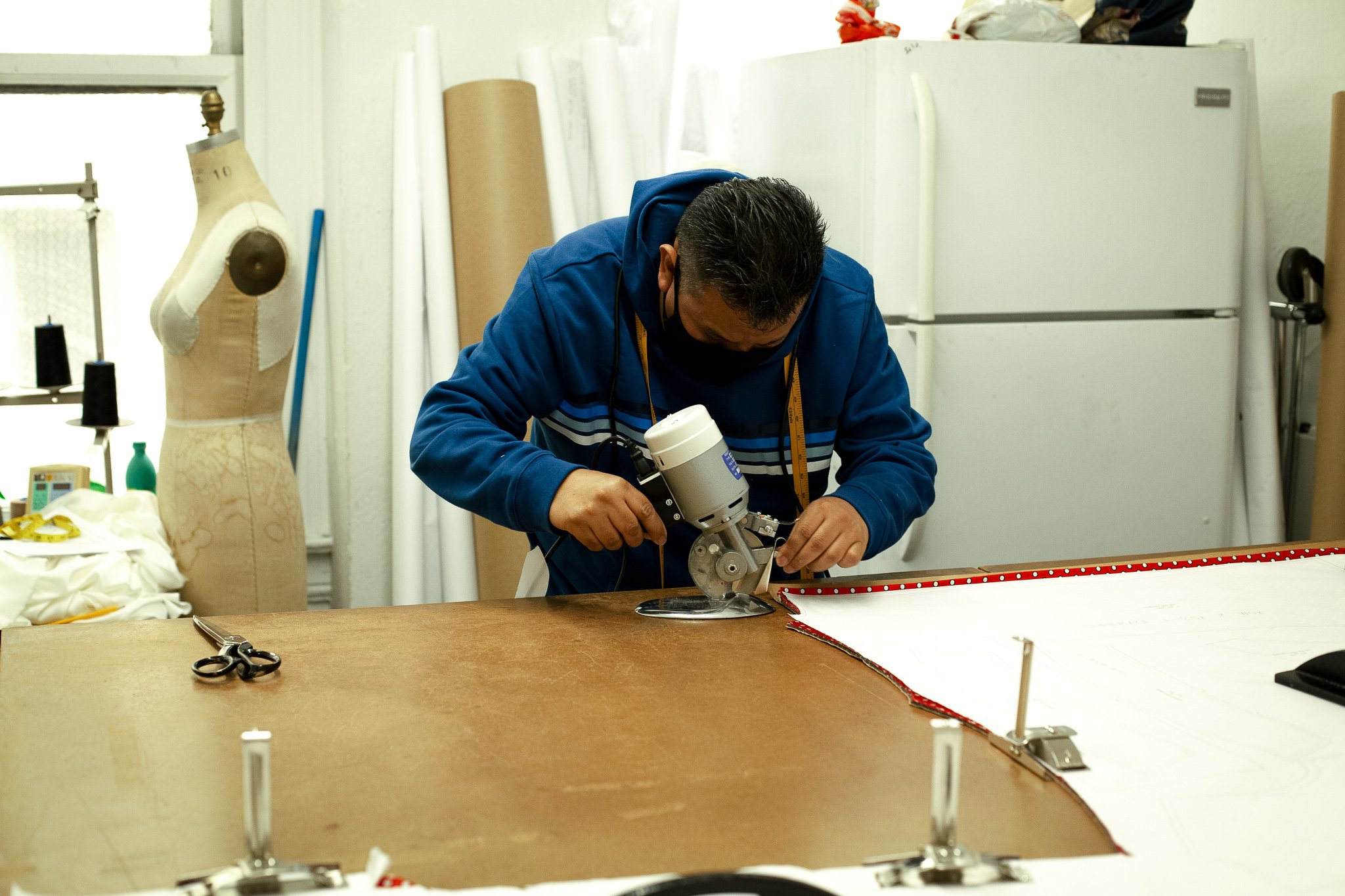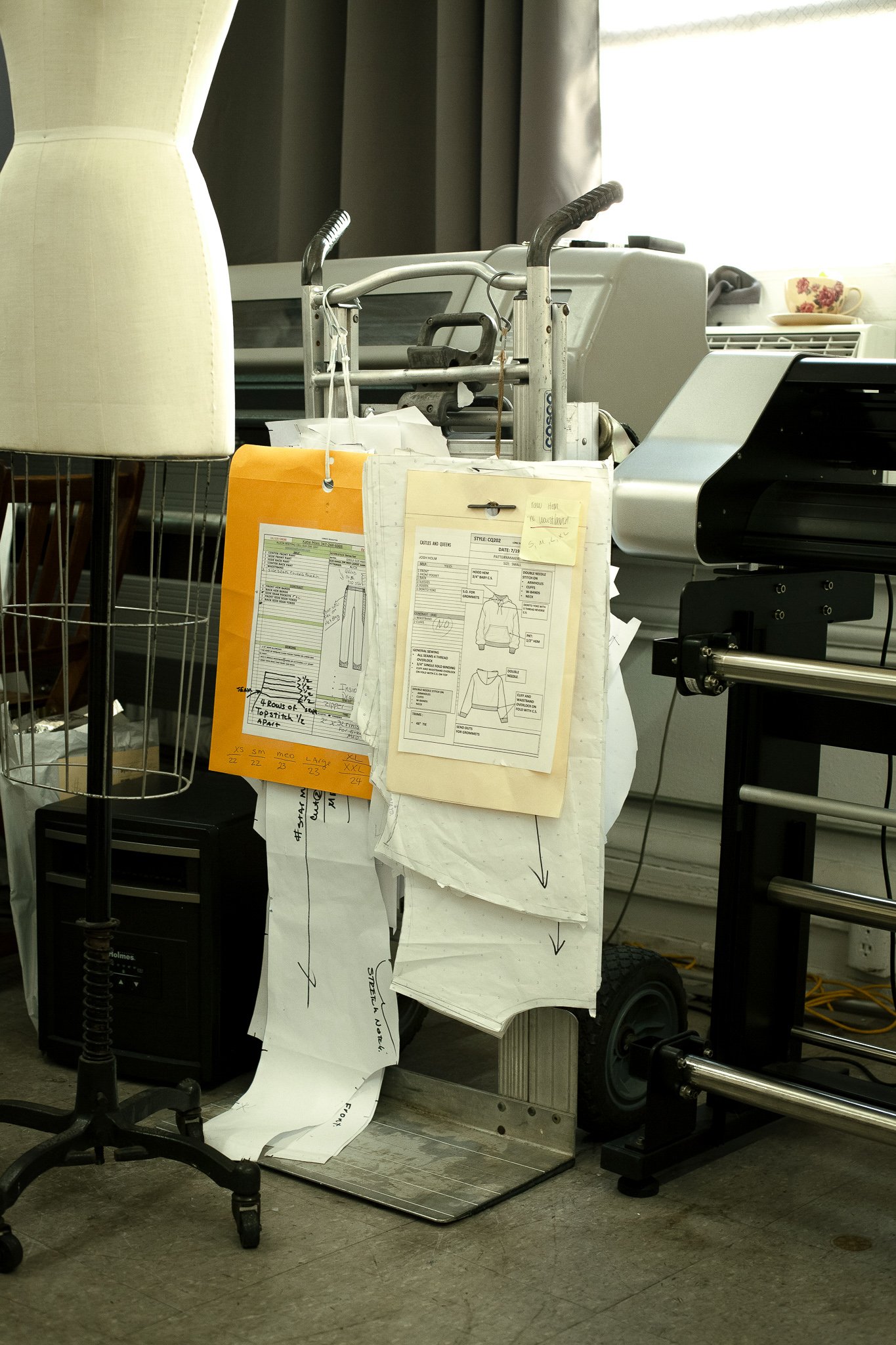What are Samples?
Samples are Garments produced to test a Design.
Once the initial pattern is drafted, it’s time to test the aesthetic, fit and function of the design. This is done by sewing one garment, a Fit Sample, from the pattern with the intended fabric. During a fitting session, the designer will comment on any necessary alterations or changes to the aesthetic, fit and function. These alterations are noted and reflected in the final pattern.
When the sample looks, fits and functions per the designer’s intended final vision, we consider this a Final Approved Sample (FAS).
Typically, the FAS is achieved after 2-to-3 rounds of revision. During the process, we save each subsequent piece as an Archival Sample. By working with archival samples, we cross check our work and confirm if the alterations to the garment have achieved the desired outcome.
Who produces samples for Rule DD?
Meet Ramon and Martha.
We’ve hand-picked some of the most skilled and collaborative partners in the Los Angeles area to support our team. Working directly with our tight-knit network ensures that our contractors are properly respected, and maintains an inherent level of sustainability.






































